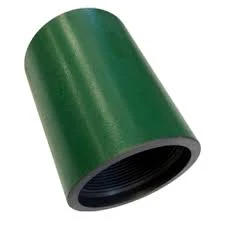- Afrikaans
- Albanian
- Amharic
- Arabic
- Armenian
- Azerbaijani
- Basque
- Belarusian
- Bengali
- Bosnian
- Bulgarian
- Catalan
- Cebuano
- Corsican
- Croatian
- Czech
- Danish
- Dutch
- English
- Esperanto
- Estonian
- Finnish
- French
- Frisian
- Galician
- Georgian
- German
- Greek
- Gujarati
- Haitian Creole
- hausa
- hawaiian
- Hebrew
- Hindi
- Miao
- Hungarian
- Icelandic
- igbo
- Indonesian
- irish
- Italian
- Japanese
- Javanese
- Kannada
- kazakh
- Khmer
- Rwandese
- Korean
- Kurdish
- Kyrgyz
- Lao
- Latin
- Latvian
- Lithuanian
- Luxembourgish
- Macedonian
- Malgashi
- Malay
- Malayalam
- Maltese
- Maori
- Marathi
- Mongolian
- Myanmar
- Nepali
- Norwegian
- Norwegian
- Occitan
- Pashto
- Persian
- Polish
- Portuguese
- Punjabi
- Romanian
- Russian
- Samoan
- Scottish Gaelic
- Serbian
- Sesotho
- Shona
- Sindhi
- Sinhala
- Slovak
- Slovenian
- Somali
- Spanish
- Sundanese
- Swahili
- Swedish
- Tagalog
- Tajik
- Tamil
- Tatar
- Telugu
- Thai
- Turkish
- Turkmen
- Ukrainian
- Urdu
- Uighur
- Uzbek
- Vietnamese
- Welsh
- Bantu
- Yiddish
- Yoruba
- Zulu
Understanding Bull Plugs and Their Applications in Various Industries
Understanding Bull Plugs What They Are and Their Applications
In various industries and crafts, terminology can often become specialized, leading to confusion for those outside of the field. One such term is bull plug. The definition of a bull plug can vary depending on the context in which it is used, but it generally refers to an object that serves a specific practical purpose, mainly in plumbing, piping systems, and certain construction applications.
Definition and Purpose
A bull plug is essentially a type of plug that is used to seal the end of a pipe or a fitting. It is typically threaded and can be found in various sizes and materials, including metal and plastic. The primary function of a bull plug is to prevent the escape of fluids or gases from the end of a pipe, which is essential in maintaining pressure and preventing contamination.
In many installations, especially within plumbing and construction, bull plugs can be a critical component. They help ensure that systems remain sealed and operational, preventing leaks that can lead to significant issues, from structural damage to inefficiencies in energy use.
Applications
1. Plumbing Systems In residential and commercial plumbing, bull plugs are frequently used in various configurations. For instance, they can be found in water supply lines or sewage systems where a pipe connection is not needed, effectively capping off the end of a pipe.
2. Oil and Gas Industry In the oil and gas sector, bull plugs play a pivotal role in the integrity of pipeline systems. They must withstand high pressures and are crucial in maintaining the safety and efficiency of the entire network.
3. Construction and Manufacturing In construction, particularly in HVAC (Heating, Ventilation, and Air Conditioning) systems, bull plugs are used to seal off ductwork temporarily or permanently. This helps in testing systems for leaks and ensuring that airflows are correctly configured.
what is bull plug

4. Other Industries Beyond plumbing and construction, bull plugs have applications in the chemical and pharmaceutical industries, where it is critical to prevent contamination. They may also be used in laboratories where pressure and cleanliness are vital.
Material Considerations
The choice of material for bull plugs is essential, often dictated by the specific requirements of the installation. Common materials include
- Brass Known for its durability and resistance to corrosion, brass bull plugs are prevalent in water supply systems. - PVC Common in drain lines, PVC bull plugs are lightweight and resistant to chemicals. - Stainless Steel Often chosen for oil and gas applications where high strength and corrosion resistance are necessary.
Installation and Maintenance
Installing a bull plug typically requires threading it into the end of a pipe. It is crucial for the installer to ensure that the threads are clean and free from debris to create a proper seal. Some installations might also require the use of additional sealing compounds or Teflon tape to enhance the seal.
Maintenance of bull plugs involves regular inspections to ensure that they remain secure and show no signs of wear or corrosion. Over time, a bull plug may need to be replaced, especially in environments where conditions can lead to deterioration.
Conclusion
In summary, bull plugs may seem like a simple component, but they carry significant responsibilities in various systems. Their role in sealing pipes and preventing leaks is vital across multiple industries, ensuring both safety and efficiency. Understanding what a bull plug is, its applications, and its installation can help individuals in related fields recognize its importance and maintain their systems effectively. Whether in plumbing, oil and gas, or construction, bull plugs serve as a small yet essential element of infrastructure.
-
Tubing Pup Joints: Essential Components for Oil and Gas OperationsNewsJul.10,2025
-
Pup Joints: Essential Components for Reliable Drilling OperationsNewsJul.10,2025
-
Pipe Couplings: Connecting Your World EfficientlyNewsJul.10,2025
-
Mastering Oilfield Operations with Quality Tubing and CasingNewsJul.10,2025
-
High-Quality Casing Couplings for Every NeedNewsJul.10,2025
-
Boost Your Drilling Efficiency with Premium Crossover Tools & Seating NipplesNewsJul.10,2025







